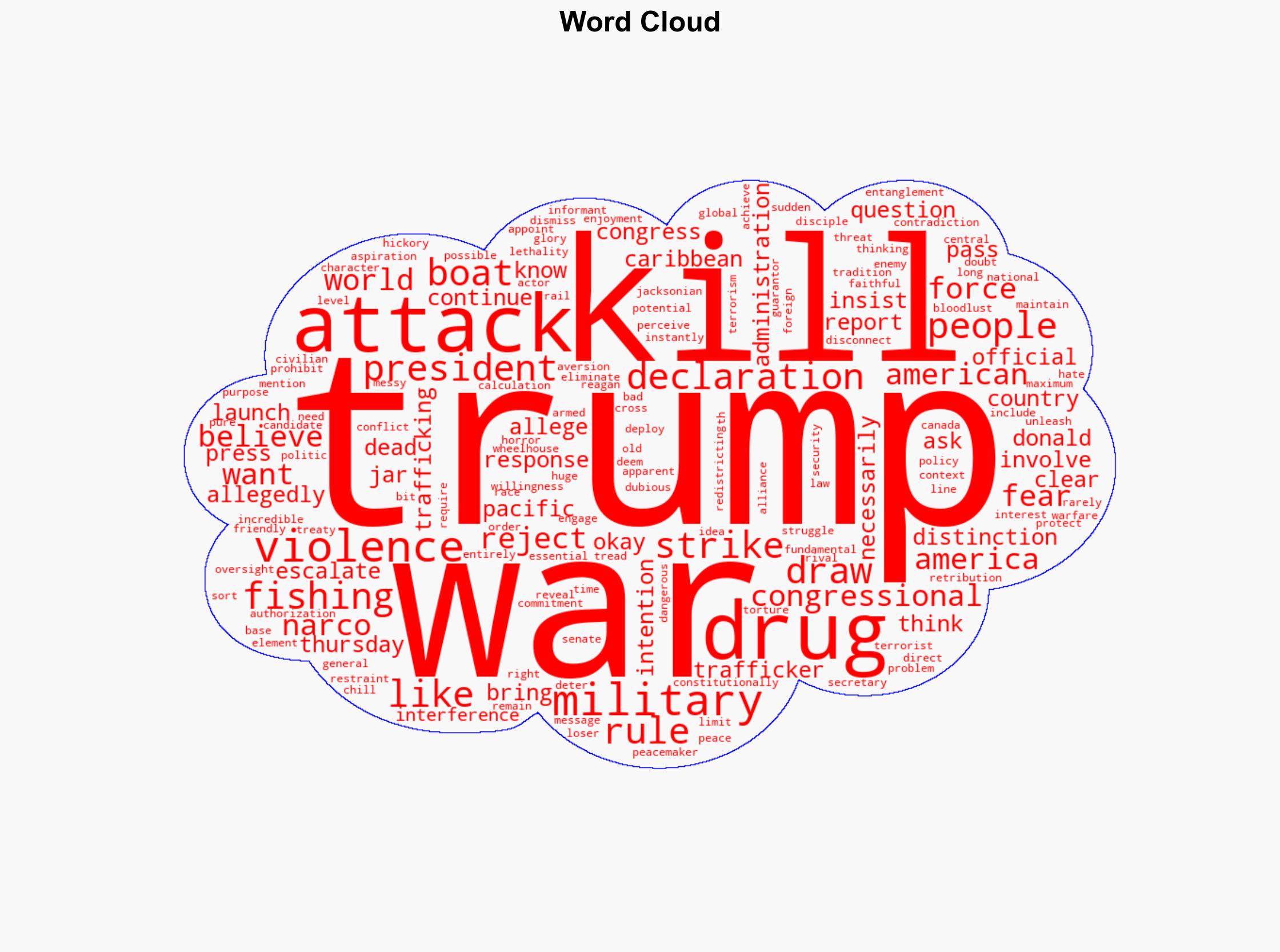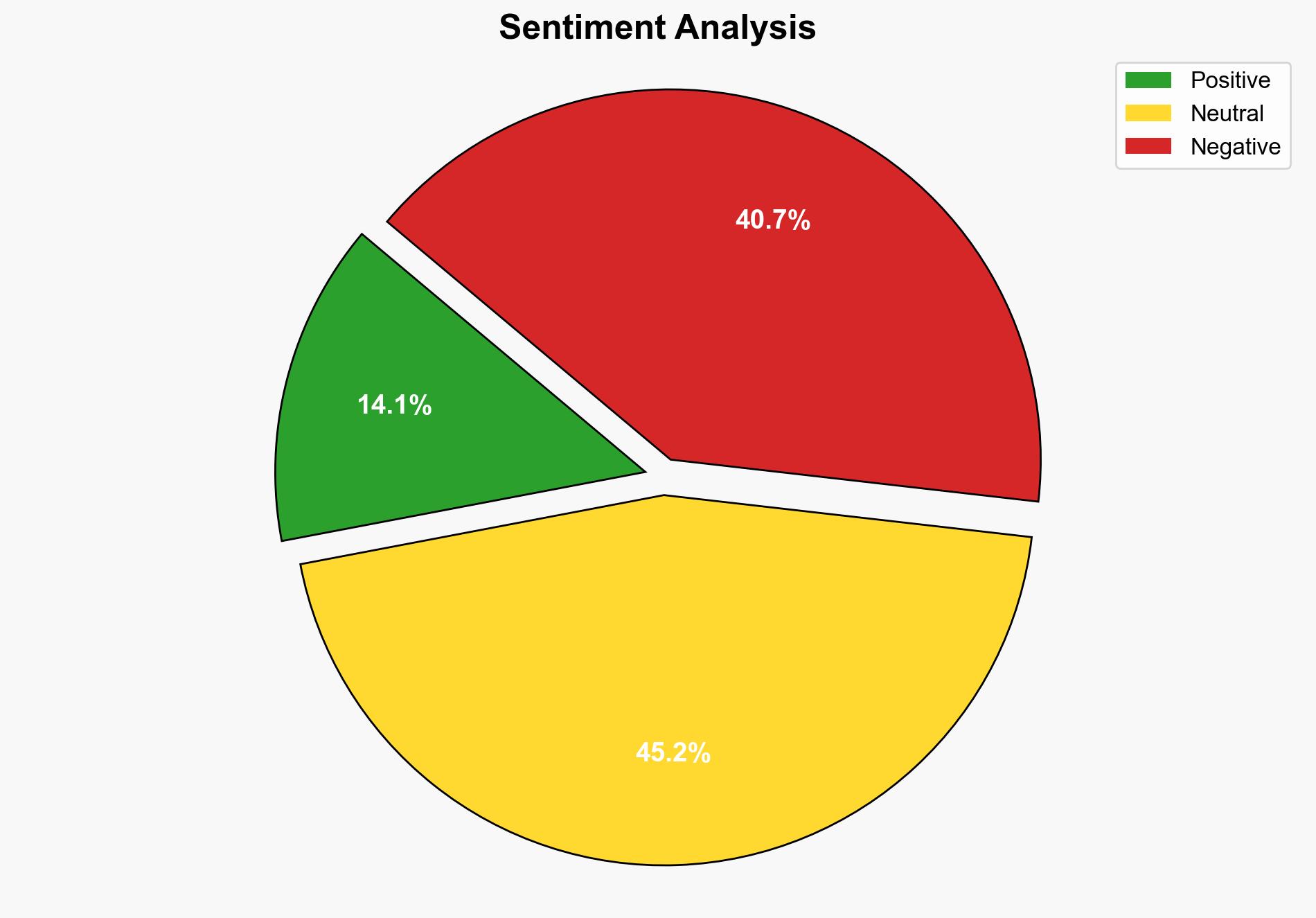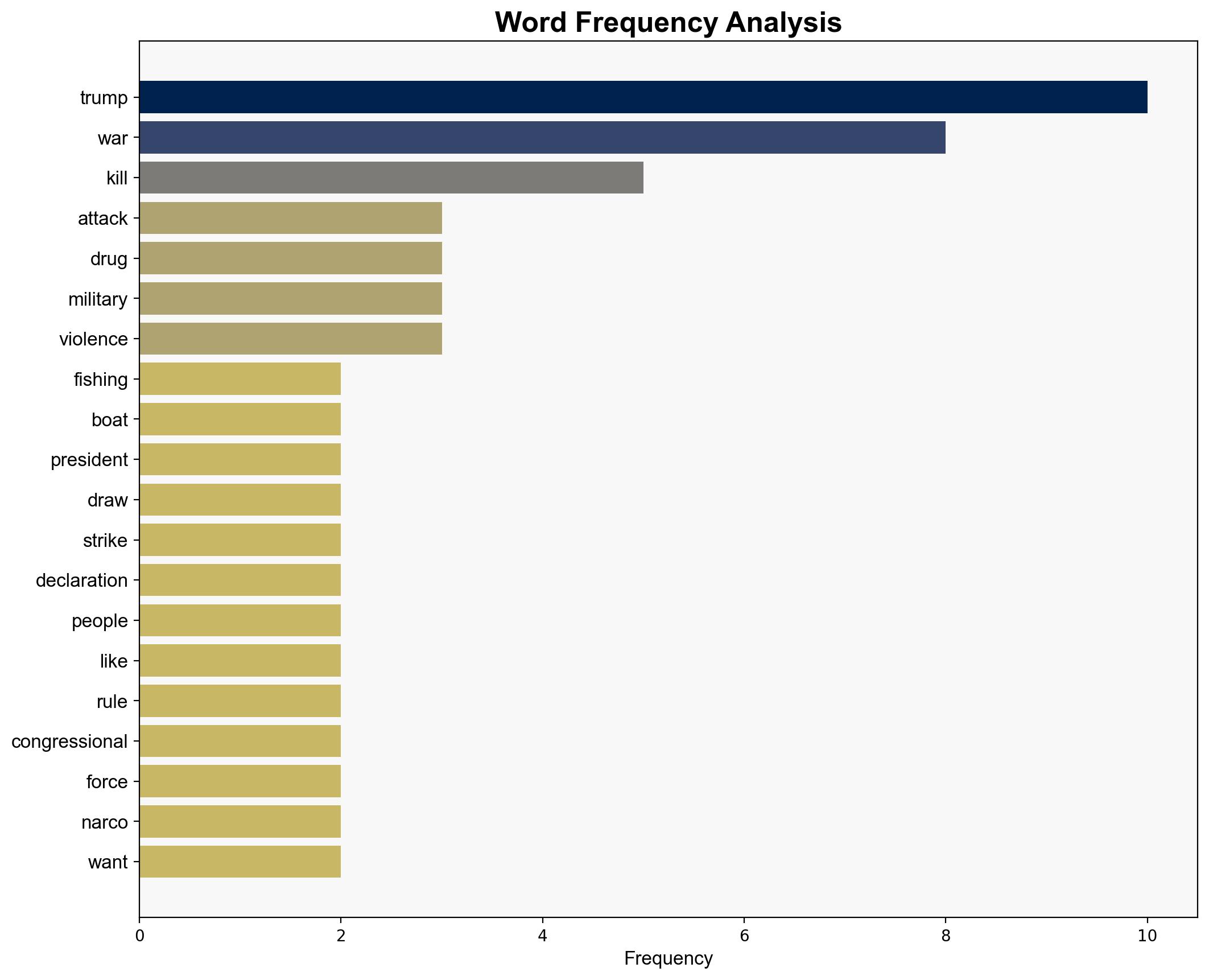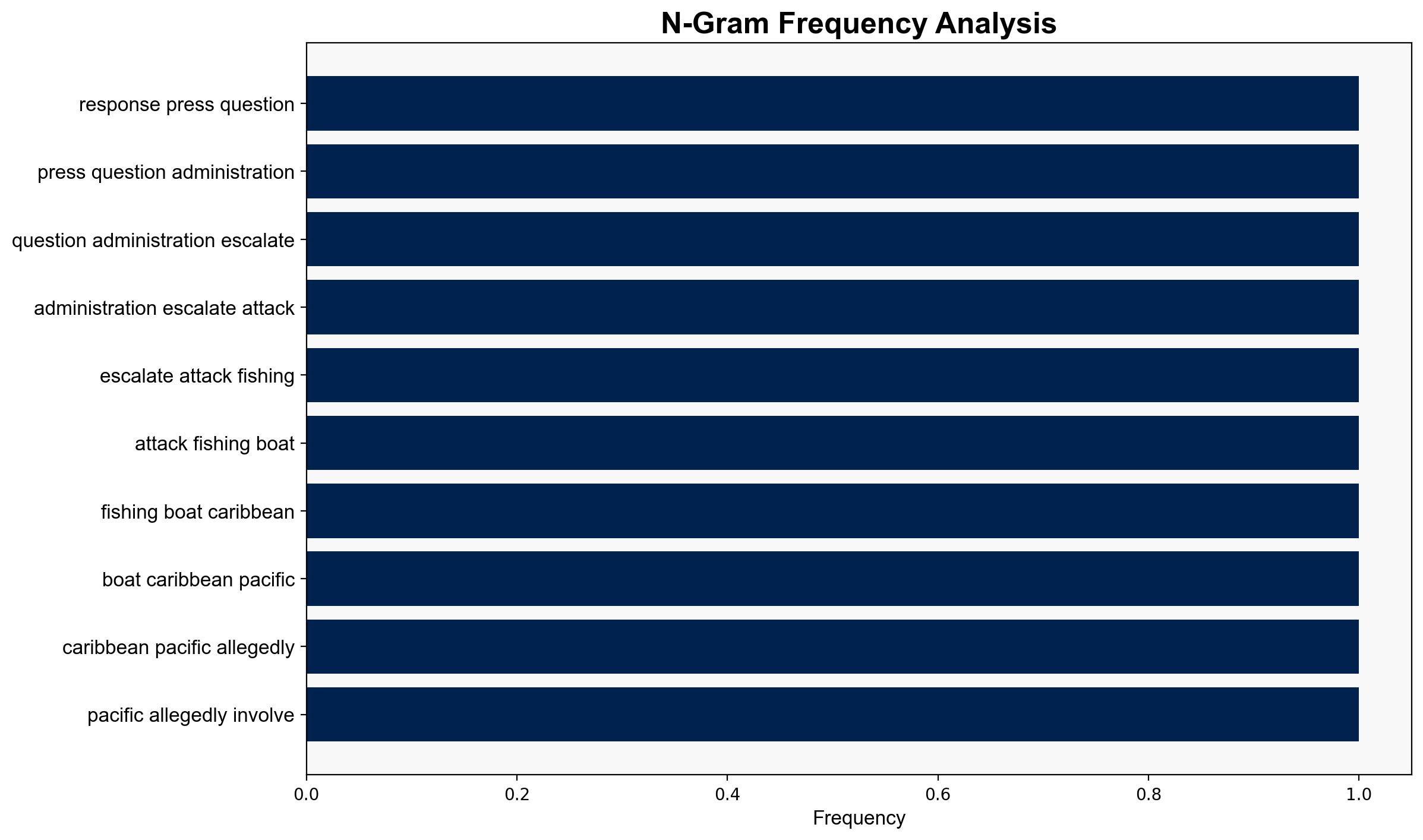Trump Wants to Kill People Without War – New York Magazine
Published on: 2025-10-24
Intelligence Report: Trump Wants to Kill People Without War – New York Magazine
1. BLUF (Bottom Line Up Front)
The analysis presents two competing hypotheses regarding Donald Trump’s statements on using military force without formal war declarations. The better-supported hypothesis suggests that Trump’s rhetoric aligns with a strategic doctrine emphasizing deterrence through overwhelming force. This approach, while constitutionally contentious, aims to project strength and deter adversaries. Confidence in this assessment is moderate, given the complexity of Trump’s historical policy positions and rhetoric. Recommended action includes monitoring shifts in U.S. military engagement policies and preparing for potential geopolitical repercussions.
2. Competing Hypotheses
Hypothesis 1: Trump’s statements reflect a strategic doctrine prioritizing deterrence through overwhelming force, bypassing traditional war declarations to swiftly neutralize perceived threats.
Hypothesis 2: Trump’s rhetoric is primarily politically motivated, aiming to appeal to a domestic audience by projecting a strongman image, with limited intention to alter actual military engagement policies.
Using ACH 2.0, Hypothesis 1 is better supported by Trump’s historical alignment with the Jacksonian tradition of foreign policy, which emphasizes direct action against threats without entangling alliances. Hypothesis 2 is weakened by the lack of consistent follow-through on similar past rhetoric.
3. Key Assumptions and Red Flags
Assumptions:
– Hypothesis 1 assumes Trump’s statements are indicative of a coherent strategic policy rather than impulsive rhetoric.
– Hypothesis 2 assumes Trump’s primary motivation is domestic political gain rather than genuine strategic intent.
Red Flags:
– Potential cognitive bias in interpreting Trump’s statements as purely strategic or purely political.
– Lack of explicit policy changes following similar past statements raises questions about actual intent.
4. Implications and Strategic Risks
The potential for increased military actions without congressional oversight could lead to geopolitical instability, particularly in regions like the Caribbean and Pacific. This approach risks escalating tensions with international actors and undermining global norms regarding the use of force. Economically, increased military engagements could strain U.S. resources and impact global markets. Psychologically, this strategy may embolden adversaries to test U.S. resolve.
5. Recommendations and Outlook
- Monitor U.S. military engagement policies for shifts towards unilateral actions.
- Engage in diplomatic efforts to reassure allies and clarify U.S. intentions to prevent misinterpretations.
- Scenario-based projections:
- Best Case: Rhetoric serves as a deterrent without actual escalation.
- Worst Case: Unilateral actions lead to significant geopolitical conflicts.
- Most Likely: Continued rhetoric with limited policy changes, maintaining status quo.
6. Key Individuals and Entities
Donald Trump
7. Thematic Tags
national security threats, cybersecurity, counter-terrorism, regional focus




